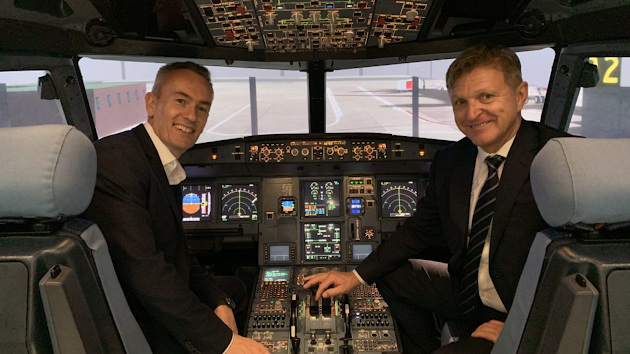Becoming a commercial pilot in India is like turning a big
dream into reality. It's a bit challenging but totally worth it! You have to
follow some steps, meet the rules set by the aviation people (DGCA), get
special training, and finish a course called CPL. In this easy guide, we'll go
through each step of getting your Commercial Pilot License in India.
1. Aspiring for a Career in Commercial Aviation:
The first step towards obtaining a Commercial Pilot License
is a genuine passion for aviation and a desire to pursue a career as a
professional pilot. Aspiring pilots should be prepared for a challenging yet
exhilarating journey ahead.
2. Educational Prerequisites:
While a high school diploma is the minimum educational
requirement, many aspiring pilots opt for higher education degrees in aviation
or aeronautical sciences. A solid educational foundation provides a deeper
understanding of the complex principles involved in aviation, which proves
beneficial during CPL training.
3. DGCA CPL Requirements:
The DGCA, as the regulatory authority governing civil
aviation in India, has specific eligibility criteria for CPL candidates:
a. Age Requirement: Candidates must be at least 18
years old.
b. Medical Fitness: Aspiring pilots must obtain a
Class 1 Medical Certificate, attesting to their physical fitness. This thorough
medical examination ensures that candidates are in optimal health to handle the
demands of commercial flying.
c. Previous License: Candidates should hold a Private
Pilot License (PPL) or meet the DGCA's specified requirements for entry into
CPL training.
4. Choosing the Right Flying School:
Selecting a reputable flying school is a crucial decision in
the pursuit of a CPL. DGCA-approved institutions with experienced instructors,
modern aircraft, and a strong safety record are preferred. The training program
should encompass both theoretical knowledge and practical flight hours.
5. CPL Training Program:
CPL
training is a comprehensive program that typically includes:
a. Theoretical Knowledge: Candidates undergo
classroom instruction covering subjects such as navigation, meteorology, air
regulations, and aviation safety. Successful completion of theoretical exams is
a prerequisite for CPL attainment.
b. Flight Hours: Accumulating a specified number of
flight hours is fundamental to CPL training. This involves solo flights,
cross-country navigation, and advanced maneuvers, all under the guidance of
certified flight instructors.
c. Simulator Training: Some CPL courses incorporate
simulator sessions, providing a controlled environment for practicing emergency
procedures and enhancing decision-making skills.
6. DGCA CPL Examinations:
Upon completing the required training, candidates must pass
DGCA examinations, including written tests and practical flight tests. These
examinations rigorously assess both theoretical knowledge and practical flying
skills.
7. Additional Ratings:
To enhance career prospects and qualify for specific
commercial pilot roles, candidates often pursue additional ratings, such as
multi-engine and instrument ratings. These supplementary certifications augment
their skills and versatility in various aircraft and weather conditions.
8. Career Advancement:
After obtaining a CPL, pilots can explore employment
opportunities with airlines, charter services, or corporate aviation. Typically
starting as First Officers, pilots gain experience and progress in their
careers, often aiming for an Airline Transport Pilot License (ATPL).
Conclusion
The journey to obtaining a Commercial Pilot License (CPL) in
India is a meticulous process that demands dedication, skill, and adherence to
DGCA regulations. Aircraft Maintenance Engineering Common Entrance Examination
(AME CEE). This examination serves
as a crucial gateway for those interested in pursuing a parallel and equally
vital career in aircraft maintenance.









No comments:
Post a Comment